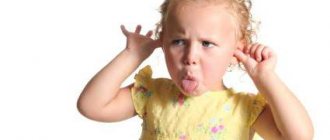Imagine that you have to pull a sled with a heavy load through the snow. If the snow is fresh and deep, it is difficult to drag, but you can choose any direction. If there is a rut on the road, it becomes easier to move, but turning around is much more difficult. This metaphor quite accurately describes how stereotyping works, a phenomenon that we will talk about today. We will talk in detail about what it is, what it is like, what pros and cons it has, and how not to succumb to its influence.
What is stereotyping?
Stereotyping is the attribution of characteristics to an object based on existing ideas and expectations. In other words, it is the process of applying a stereotype to an object. Stereotyping allows you to quickly and with minimal effort create a complete picture, extending the properties of other objects to which it is similar to a new object. The approach is undoubtedly convenient. But such a picture will not always reliably reflect objective reality.
The structure of a stereotype includes 3 components:
- Cognitive (rational) component. This is knowledge or a subjective opinion about the object of stereotyping, consisting of certain statements, but not containing an emotional assessment.
- Affective (evaluative) component. This is a positive or negative assessment of an object, a feeling of sympathy or antipathy. The same cognitive component can be combined with different affective ones.
- Behavioral (conative). This is an idea of how one should behave in relation to the object of stereotyping (some authors believe that this component should be excluded from the structure of the stereotype).
Let's look at an example of stereotyping that involves all 3 components. Modern youth are loyal to tattoos, but the older generation is accustomed to considering them an attribute of criminals. The owner of such a stereotype, seeing a person with a tattoo, draws incorrect conclusions about his past (cognitive component), perceives him negatively and hostilely (affective component), and tries to avoid him (behavioral component).
Examples of stereotyping
There are many common stereotypes that are adopted and actively used by the majority of members of society. Many of these stereotypes are gender-based, but many are also related to nationality, religion, and other characteristics. Here are some common stereotypical statements you've probably heard:
- If a woman is building a career, it means her personal life has not worked out.
- All women want to get married, but men, on the contrary, do not want to get married.
- Women are naturally monogamous, while men are polygamous.
- All Germans are very punctual and responsible.
- All Englishmen are phlegmatic.
- Russians are one of the most drinking nations.
- All doctors have illegible handwriting.
There are a huge number of similar statements. Their characteristic feature is that they are categorical and attribute a certain property to an entire social group or even an entire nation. Moreover, in most cases they do not correspond to reality, although they may well have certain historical prerequisites.
The most common examples from life
Social stereotypes are present in all spheres of human life, new clichés and patterns appear regarding family and friendship relationships, about women and men.
The most famous mindsets and perception stereotypes:
- The housewife is an unkempt woman of no age
, wearing a dirty apron and curlers. She doesn't work, but she always looks exhausted. Nowadays, many women sit at home, work on the Internet, lead an active life, take care of their families and raise children, and still look great. - After the birth of a child, you can say goodbye to your career
and beautiful figure. But in fact, work and appearance after childbirth are a woman’s individual choice. - Old man means wise man
. Old age and wisdom are not synonymous; respecting people only because of their age is stupid. Each age group has completely different representatives, good and bad.
Often in modern society you can hear that power spoils people, a woman can be either smart or beautiful, you can’t earn big money honestly.
Types of stereotyping
Depending on the object that is judged on the basis of stereotypes, there are 3 types of stereotyping:
- personal (directed at a person);
- objective (directed at an inanimate object);
- circumstantial (implies the construction of cause-and-effect relationships based on stereotypes).
Stereotyping can involve forming an opinion about yourself or someone else. On this basis, there are two types of stereotypes:
- autostereotypes (images about oneself);
- heterostereotypes (ideas about someone else).
Depending on the source of the stereotype, two types of stereotyping are distinguished:
- individual (based on personal experience);
- social (based on stereotypes imposed by society).
In psychology there is such a thing as “dynamic stereotyping”. This is a complex reaction, similar to a conditioned reflex, which is developed through repeated repetitions. For example, in table tennis or lawn tennis, players can predict the flight path of a ball or ball based on the movement of the opponent’s body and act proactively.
The emergence of images
Stereotyping is a process that is associated with certain situations in society. In each specific case, a certain image successfully completed the tasks indicated above and, accordingly, took on a stable form. However, the social conditions in which the life of the group and the people included in it take place change faster than the stereotypes generated in it. As a result, a stable image begins to exist separately, independently. At the same time, it influences the development of relations of this group with other communities, and of a particular person with other people. When stereotypes arise, they often go through a stage associated with the pattern of formation of “social pronouns” - “they-we-I”.
Stages of stereotyping
The second signaling system is involved in the formation and use of stereotypes. This process is usually divided into 3 phases:
- Initial. This is the stage of perception, at which the senses perceive external stimuli and transmit signals to the corresponding parts of the brain.
- Search response. The resulting images are correlated with those already contained in memory. If a coincidence occurs, the existing image intensifies, becomes more distinct, and is saturated with details. If there is no coincidence, a new image is created, which may subsequently dissipate if it is not consolidated.
- Identification. If a coincidence occurs, the resulting image is supplemented with details from the image stored in the image memory, acquiring new characteristics and becoming more saturated.
It is worth noting that this chain does not always give results that correspond to reality. For example, imagine that you see a large stone on the road. In your perception, its image is completed, and you imagine a specific shape and can even estimate the weight of this stone. Most likely, this assessment will be correct. However, it may turn out that the stone inside is empty or made of wood and painted.
Dogma
The second myth concerns the peculiarities of perception of the stereotype itself. A person who thinks in stable images is often recognized as having meager and unpromising mental models. Stereotyping in psychology is a phenomenon that cannot be characterized as bad or good. Another thing is that the possibilities of this sustainable image are local. They are limited by the limits of the situation of role-playing, intergroup perception. When stable models are transferred to events of interpersonal understanding, replacing them with more subtle tools of attunement to other individuals, distortion and destruction of communication and interaction occurs.
How is the tendency to stereotype formed?
To begin with, let us clarify that the tendency to stereotype is natural for most people, since it is due to evolution. In a very simplified way, we can say that it solves two problems:
- Reduces the load on the brain when analyzing circumstances;
- Increases the likelihood of survival.
Everything is clear with the first statement - stereotypical thinking allows you to form an opinion about an object or situation without expending mental effort (and the brain, as we know, is the most “voracious” organ in our body). But the second factor is no less important. The fact is that the life of primitive people was fraught with much more dangers than we can imagine. And therefore, at that time, a quickly made decision increased the chances of survival.
Let's imagine a situation: a primitive man walks through a clearing and suddenly sees a huge animal with large fangs. Stereotypical thinking tells him that this is most likely a dangerous predator. And this stereotype significantly increases the chances of survival.
Although the world today is not so dangerous, we still have a tendency to stereotype. But its main task comes down to saving mental effort . If we could completely abandon stereotyping, this would create a strong burden on our psyche, because we would have to do a lot of work to classify objects and events. The use of patterns and stereotypes facilitates the process of cognition, therefore the tendency to stereotype is an integral part of our psyche.
Advantages and disadvantages
As we have already found out, stereotyping is a feature of our psyche due to evolution. And even in modern conditions it can be beneficial. In particular, it provides such advantages as:
- social control (limit antisocial behavior);
- quick decision making in typical situations;
- saving mental and emotional energy;
- quick response to danger;
- accelerating the process of cognition due to generalization of knowledge.
The main disadvantages of stereotyping include such manifestations as:
- xenophobia and racism;
- gender chauvinism;
- stigma;
- intolerance and discrimination.
Thus, many of the problems of modern society are caused precisely by the stereotypical thinking that is characteristic of most of us. We tend to see a threat in every unfamiliar object, so we pay attention primarily to the differences, rather than to the similarities between people. And this is the most important source of trouble for humanity.
How to avoid stereotyping?
Of course, it is impossible to completely get rid of the tendency to stereotype. And yet you can learn to avoid it by forming your ideas about people, events and circumstances. One of the best exercises for this is to imagine yourself as the object of stereotyping.
The essence of the exercise is to conduct various thought experiments, imagining yourself surrounded by people who perceive you in accordance with certain stereotypes, since their knowledge is limited. We must try to understand the nature of their stereotypes and find words to explain to them that they are mistaken. Over time, this exercise will help you learn to identify your own stereotypes and explain to yourself why they are wrong.
In-group favoritism
It represents a tendency to favor members of one's own group in comparison with other groups. Simply put, “ours are better than not ours.” This explains the fact that in a foreign city people are very happy with fellow countrymen, and in another country - with compatriots. However, this phenomenon does not always occur. Favoritism is not characteristic of every group, but only of those that are developing successfully, have a positive system of internal values, and are distinguished by cohesion. In teams where there are conflicts, disintegration, and restructuring of goals, there may be no time for favoring tendencies. Moreover, the exact opposite phenomenon is also possible. It will manifest itself in favoritism towards members of the other group.











